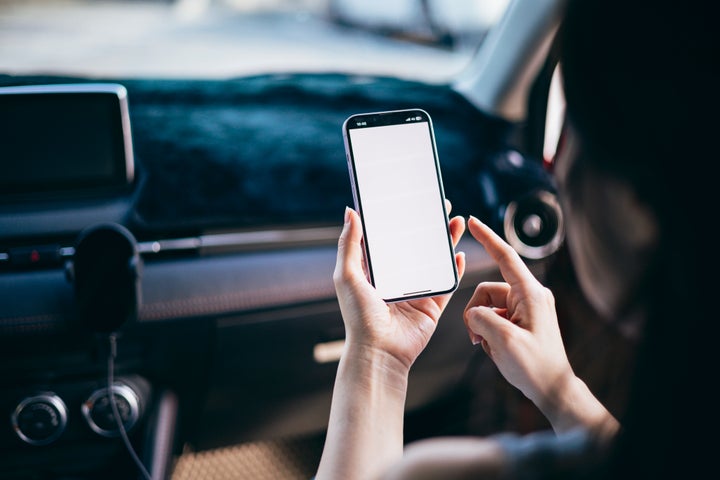This iPhone Feature Saved My Life — Here’s Why You Should Set It Up Now
If there’s one thing no one expects after a magical day at Disneyland, it’s getting into a car crash on the way home. From the “happiest place on Earth” to the worst, there I was — dazed, disoriented and idle in a totaled car on the freeway. The chaos hadn’t even sunken in before my phone started ringing from somewhere in my bag. My iPhone had already called 911 and alerted my emergency contacts.
As someone who’s always been skeptical about location tracking, the idea of Crash Detection was suddenly less creepy and much more comforting; it has your back when things go sideways (or upside down). But here’s the kicker: I didn’t know a thing about the feature before my accident, and my friend in the car with me had never even heard of it.
Advertisement
So, what exactly is Crash Detection? Is it something you should have turned on? And is this a glimpse into a future where our devices aid us when others can’t?
To break it down, we tapped a few experts on the front lines — first responders like an EMT, a fire engineer and a nurse — to explore how this tech works and why it might be the unsung hero of your phone’s features.
What is Crash Detection, and how does it work?
Crash Detection is one of those quietly impressive features that flew under the radar until it mattered. Available on iPhone 14 models and later, it combines accelerometers, gyroscopes, microphones and barometers (basically the same tech you’d expect in a Bond gadget) to sense a major car accident. If your iPhone picks up on a crash, you have a 10-second window to stop it before it automatically dials 911 and sends your location to your emergency contacts.
Advertisement
In my case, that 10-second window was a godsend. I briefly lost consciousness, so my phone made the call I couldn’t. The looped audio message played over my phone’s speakers, and my coordinates were sent to emergency services — these are lifesaving details when you’re too stunned to function.

shih-wei via Getty Images
Even if you’re off the grid, without cellular or Wi-Fi coverage, your phone can use satellite to text for help. This level of tech doesn’t just impress; it saves lives.
Advertisement
“As a nurse, I’ve seen firsthand how time is everything in an emergency,” said Mia Cetti, a nurse at Mount Sinai hospital. “When someone is unconscious or unable to communicate, a few minutes can mean the difference between life and death. The fact that Crash Detection can call for help even when you can’t is huge.”
People are accidentally disabling it — don’t be that person.
Despite its lifesaving potential, many people have unintentionally turned off Crash Detection, whether by accident or out of frustration with false alarms from dropping their phone too hard. But first responders say the risk of missing a real emergency far outweighs the occasional misfire.
“There have been multiple incidents where we’ve arrived at the scene of a traffic collision because the Apple Crash Detection was activated,” said Antonio Chavez Jr., a fire engineer with over two decades of experience. “The feature gives decent GPS coordinates and puts us in the general location of the incident.”
Advertisement
As for the concern of accidental alerts wasting time? It’s not a significant issue. “The occurrence of these types of false incidents is so low that it’s not a concern at present,” Chavez explained. “More people should be using some type of crash detection service. They might find themselves in a situation where they are unconscious and need emergency services.”
EMT Finn Kerwin agrees. “I’d worry more about missing an accident than false alarms,” Kerwin pointed out. “Often we rely on witnesses to call in a traffic collision. If a crash takes place in a rural area, it can potentially go unnoticed.”
Here’s what emergency responders want you to know.
Although crash detection hasn’t dramatically altered emergency response protocols yet, it’s clear that when it does come into play, it can be a game changer.
Advertisement
“There’s a small percentage of emergency calls where this type of technology plays a factor,” Chavez said. “But in life-and-death situations, every minute counts. We always strive to stay within the ‘golden hour’ of care.” (“Golden hour” refers to the critical first hour after a traumatic injury when the chances of saving a life are highest.) Kerwin also stresses the importance of underutilized smartphone safety features like Medical ID. “I wish more people used it,” he said. “It helps us make critical decisions for treatment — things like knowing allergies or blood type — and usually attaches a contact we can call for support.”
Don’t wait for an emergency.
In a world where airplanes are crashing and measles cases are on the rise, the few minutes it takes to set up your emergency settings and Medical ID are minutes well spent. The next time you’re casually scrolling through your phone, take a detour and check your settings.
We Don’t Work For Billionaires. We Work For You.
Already contributed? Log in to hide these messages.
Because, when an emergency strikes, every second matters — and your iPhone is already primed to leap into action. The only question is: Will you let it?
Advertisement

Comments are closed.